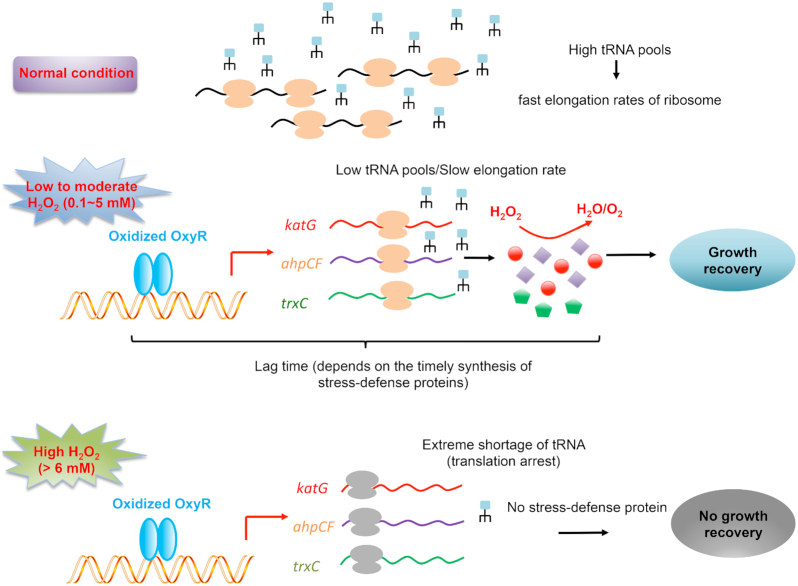Figure 7.
Schematic illustration depicting the maintenance of translational elongation rate as the physiological bottleneck limiting the survival of E. coli cells during oxidative stress. At normal condition, the cellular tRNA pools are highly abundant, supporting fast translational elongation rate of ribosomes. Upon the treatment of 0.1–5 mM H2O2, translational elongation significantly slows down due to lower tRNA pools. Therefore, cells need a certain lag time (depends on the H2O2 dosage) to synthesize stress defense proteins (e.g. KatG, AhpCF and TrxC) to remove H2O2 and maintain redox homeostasis before the growth can be resumed. When the external H2O2 level is higher than a threshold level (6 mM), translational elongation gets completely stalled so that cells lose the capacity to synthesize stress-defense proteins and ultimately fail to survive from the oxidative damage and resume growth.

